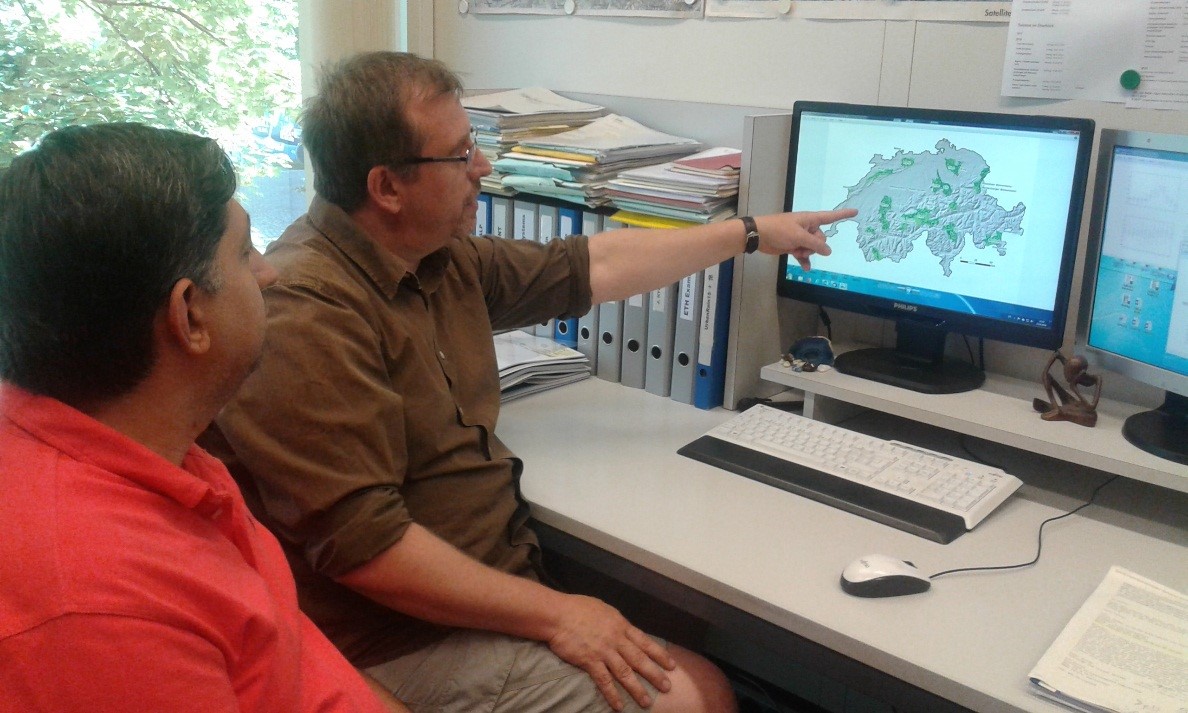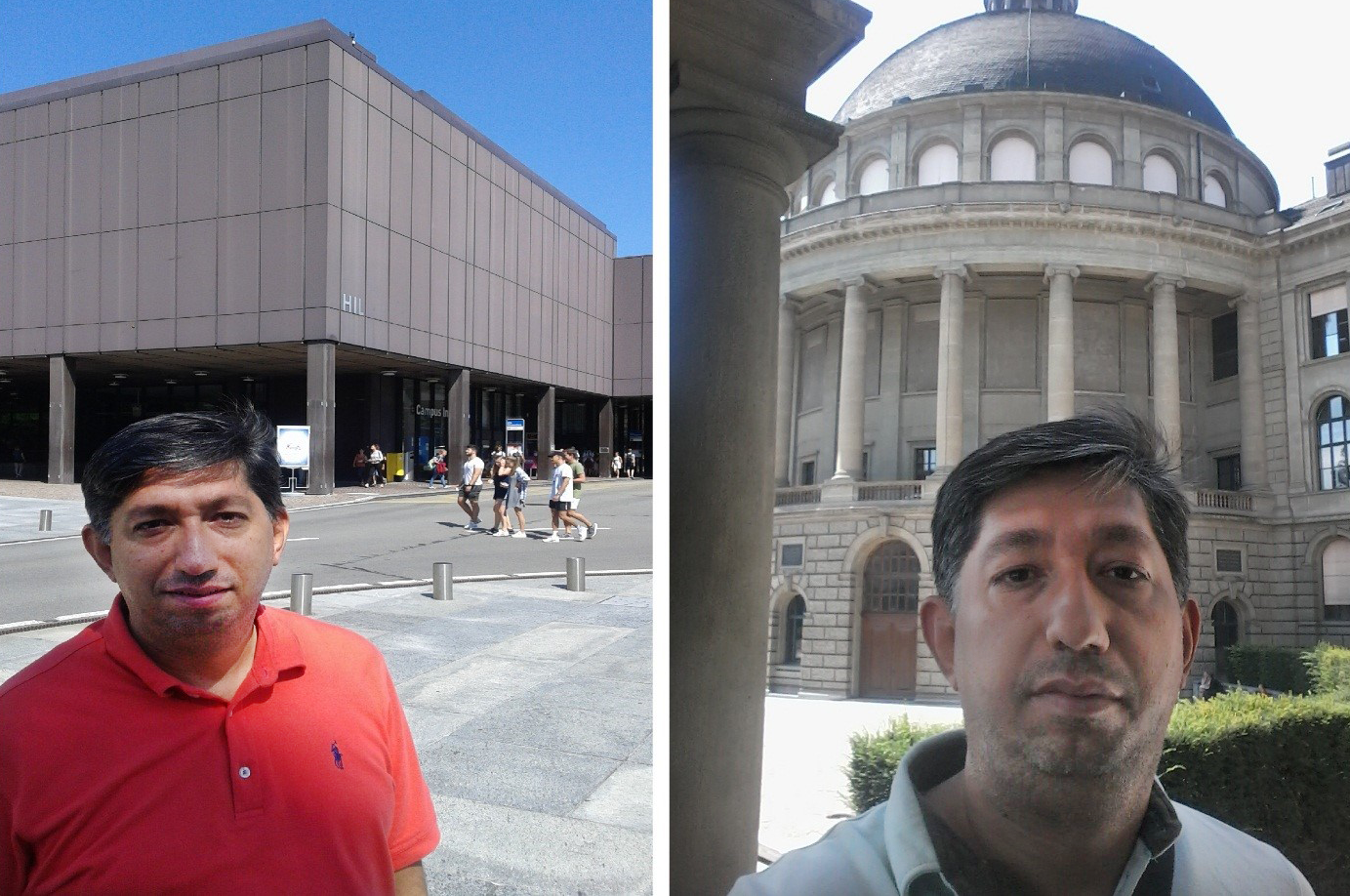People usually remember Switzerland for its wonderful chocolate, watches, beautiful landscape in summer, and clear sky in alpine mountains in winter. Beyond the clichés, I discovered during my summer stay at ETH Zurich that there is so much more to this country. Living and moving in Zurich are stress-free for a visitor from Iran like me. For example, the buses and trams are very accessible, punctual and you can find your destinations very easily via the transportation system maps. One of the most interesting facts about Switzerland in general, and Zurich specifically, is the diverse cultural environment where different languages are spoken and different communities live together in harmony. The university campus is also very comfortable for faculty and students, a dynamic space which reflects the multi-cultural characteristics of the society.
Learning about the future of drought and heat waves in Switzerland
by Prof. Reza Modarres, 27.9.2018

Prof. Molnar describes the hydrology of Switzerland (photo credit: Reza Modarres/ETH Zurich)

Hot and dry July (2018) at the ETH Zurich Hönggerberg campus (left) and ETH Zentrum building (right) (photo credit: Reza Modarres/ETH Zurich)
For me as a hydrologist, joining ETH Zurich as one of the global leading universities to do research on water shortage and drought in Switzerland was a very attractive challenge. At first glance, and in the contrast to my country, Iran, droughts should not be a problem in Switzerland. However, the evidence tells a different story. Many researchers are now working on different aspects of drought in Switzerland. For example, Prof. Seneviratne’s group works on land climate interactions leading to droughts and heatwaves. Prof. Bresch’s group investigates drought risk for society. Prof. Molnar, as my host at ETH, and his group, are working on hydrologic drought in rivers, searching for spatial and temporal patterns of low streamflow statistics related to physical features of their catchment areas.
During my summer stay, Prof. Molnar and I looked into the relationship between meteorological and hydrological drought using an advanced multivariate time series model developed in economy, called the Multivariate Generalized Autoregressive Conditional Homoscedasticity (MGARH) model. This model allows the statistical relationship between two variables (e.g. meteorological and hydrological drought indexes) to change in time in the form of a dynamic conditional correlation. The aim of this joint research is to see how meteorological drought impacts on hydrologic drought in the last 55 years in catchments across the country.
The results show interesting relationships between hydrological and meteorological droughts. The model shows high time to time changes in the rainfall-runoff relationship especially in high mountainous regions. In these regions the drought memory to the past is not very strong, while the strength in the memory increases at low lands. The elevation around 1500m was found to be the changing point of long and short term memory in the rainfall-runoff process. In Switzerland this has to do with the effect of temperature on the hydrological regime, affecting evapotranspiration and snow cover dynamics. We will next compare our findings with arid zone catchments in Iran.
My stay at ETH in the summer of 2018 was a multi-dimensional experience. I learned about Swiss culture as well as its climate and water resources. In the view of the Swiss people I met, this summer was unusually hot and dry. Many friends of mine pointed to yellow lawns and hot weather during July, and were unhappy about the lack of rainfall. Is this a warning for hotter and drier summers in future? We cannot say for sure, but I believe it is likely that weather extremes such as droughts and heatwaves will indeed increase in many parts of the globe, including Switzerland.
About the author
Reza Modarres is a faculty member at the department of Natural Resources, Isfahan University of Technology Iran (IUT). Reza has been working on statistical and stochastic hydrology and meteorology, especially extreme events such as drought, floods and heat waves since his master’s degree. His summer scientific visit was funded under the Research for Development program of ETH Global, based on the Memorandum Of Understanding between IUT and ETH Zürich.
